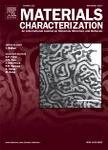版权所有:内蒙古大学图书馆 技术提供:维普资讯• 智图
内蒙古自治区呼和浩特市赛罕区大学西街235号 邮编: 010021

作者机构:Arizona State Univ Dept Chem & Mat Engn Tempe AZ 85287 USA Univ Alabama Dept Mat Sci & Engn Birmingham AL 35209 USA Natl Inst Stand & Technol Mat Sci & Engn Lab Div Ceram Gaithersburg MD 20899 USA Natl Inst Stand & Technol Informat Technol Lab Math & Comp Sci Div Gaithersburg MD 20899 USA
出 版 物:《MATERIALS CHARACTERIZATION》 (材料特性)
年 卷 期:2002年第49卷第5期
页 面:395-407页
核心收录:
学科分类:0806[工学-冶金工程] 08[工学] 0805[工学-材料科学与工程(可授工学、理学学位)]
主 题:microstructure-based modeling Al/SiC composites WC/Co composites Young's modulus thermal expansion
摘 要:While it is well recognized that microstructure controls the physical and mechanical properties of a material, the complexity of the microstructure often makes it difficult to simulate by analytical or numerical techniques. In this paper we present a relatively new approach to incorporate microstructures into finite element modeling using an object-oriented finite element technique. This technique combines microstructural data in the form of experimental or simulated microstructures, with fundamental material data (such as elastic modulus or coefficient of thermal expansion of the constituent phases) as a basis for understanding material behavior. The object-oriented technique is a radical departure from conventional finite element analysis, where a unit-cell model is used as the basis for predicting material behavior. Instead, the starting point of object-oriented finite element analysis is the actual microstructure of the material being investigated. In this paper, an introduction to the object-oriented finite element approach to microstructure-based modeling is provided with two examples: SiC particle-reinforced At matrix composites and double-cemented WC particle-reinforced Co matrix composites. It will be shown that object-oriented finite element analysis is a unique tool that can be used to predict elastic and thermal constants of the composites, as well as salient effects of the microstructure on local stress state. (C) 2003 Elsevier Inc. All rights reserved.